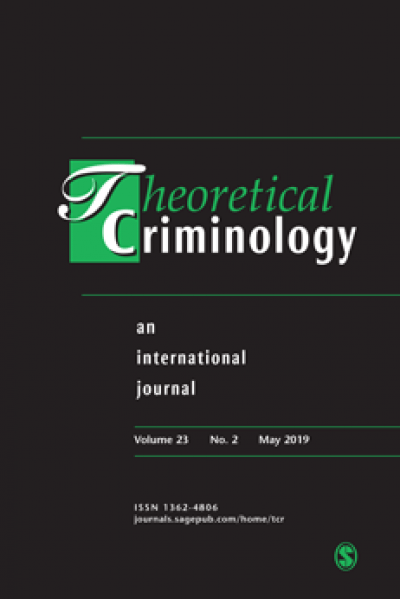Introducing the New Themed Series on Transforming Borders from Below
Posted:
Time to read:
Guest post by Nancy A. Wonders and Marie Segrave. Nancy is a Professor of Criminology and Criminal Justice at Northern Arizona University and Marie is Associate Professor of Criminology at Monash University. This is the first installment of Border Criminologies’ themed series on Transforming Borders From Below. The series includes short posts written by international scholars who discuss and develop ideas contained in articles published in a special issue of Theoretical Criminology on Transforming Borders From Below: Theory and Research from across the Globe.

Over the years, we have spoken with border crossers from contested border zones across the globe. Based on our own primary research and similar work by other scholars, including many of those featured in this blog series, we do not view borders merely as geographic boundaries created by nation-states. Instead, we view borders and bordering as dynamic relational processes; bordering is performed by many actors who are frequently engaged in struggle with one another. Research that focuses exclusively on what nation-states do to construct and enforce borders fails to appreciate the many ways that border crossers and their allies also shape bordering as they cross borders, challenge bordering, and transform borders from below.
The TC special issue and this blog series includes the work of leading international border criminologists and social scientists engaged in primary research that prioritizes the voices and perspective of those who have crossed borders. Collectively, this work develops theoretical and conceptual tools useful for analyzing bordering; it also identifies many sites, strategies, and tactics being used to resist the bordering of nation-states and to transform bordering from below.
In a previous Border Criminologies blog post and in their TC article, Nancy Wonders and Lynn Jones argued that contemporary bordering by many nation-states is designed to produce social inequalities between people. Yet, many border crossers and their allies find ways to bridge these differences in their daily lives by engaging in citizenship performances that challenge the divide between citizenship and irregularity. In the new blog post that follows, Jones and Wonders take this idea further to explain why much irregular migration today could be considered a social movement for significant social change.
Marie Segrave’s blog post and TC article also features the power of migrants to challenge social exclusion, focusing on how they do so in their everyday lives. As she explains in her post based on primary research in Australia, even while many migrants are formally excluded, they are simultaneously ‘differentially included’ in migrant-worker networks, the workplace, and the broader community.
Sanja Milivojevic examines how migrants utilize technology, particularly smartphones and social media, to resist various forms of bordering with a focus on the Western Balkans. In her TC article and in her blog post, she emphasizes how use of these technologies aided migrant journeys, facilitated information-gathering and networking, and allowed for the development of a digital commons that served as a site for re-humanizing border crossers.
It is not just migrants who are challenging borders and bordering. As Leanne Weber’s TC article and blog entry reveal, some of the workers in educational institutions and health agencies in Australia resist the role that they are frequently expected to play in helping to create what she calls the ‘structurally embedded border.’ Through acts of commission and omission, these service workers reveal their capacity to subtly shift power away from the nation-state and, in doing so, to transform borders from below.
In their TC article, Raymond Michalowski and Frederic Solop make the crucial point that ‘below is a complex place’ that often contains competition between those who promote narratives in support of migrants and those who oppose immigration as they seek to influence elite decision-making. In their blog post, Michalowski and Solop demonstrate how their analytic approach to political power, which considers the dynamic relationship between ‘below’ and ‘above’, can be used to examine competing narratives about the arrival of ‘caravans’ of asylum-seekers to the US.
The TC article and blog post written by Alison Gerard and Leanne Weber similarly draws attention to the complex and contradictory dynamics that exist ‘below.’ Their research with government-contracted NGO workers highlights the tensions that exist within humanitarian borderwork, especially between the pursuit of humanitarianism as an agency goal and the need to prioritize security concerns as a contradictory goal that too often gets prioritized in day-to-day work.
Although not included in this blog series, we also wish to encourage those interested in how borders are being transformed from below to read Cristina Fernandez’ excellent TC article on ‘A theoretical typology of border activism: From the streets to the council’ and also the exceptionally informative article by Giulia Fabini on ‘Internal bordering in the context of undeportability: Border performances in Italy’.
By every account, global migration is a trend that will only increase into the future. While it remains crucially important to focus on how and why nation-states produce borders and bordering, it is equally important to examine ways that borders crossers and their allies shape borders from below. It is clear that while many nations seek to continue to control and limit mobility in ways that are considered to be of benefit to the nation, this control is not absolute and it is challenged and undermined in diverse ways and places. By deepening our understanding of the complex, competing, and contradictory ways that borders and bordering are socially produced, we can better consider the important role that we all must play if we wish to transform borders in the future.
Any comments about this post? Get in touch with us! Send us an email, or post a comment here or on Facebook. You can also tweet us.
__________
How to cite this blog post (Harvard style)
Wonders, N. A. and Segrave, M. (2019) Introducing the New Themed Series on Transforming Borders from Below. Available at: https://www.law.ox.ac.uk/research-subject-groups/centre-criminology/centreborder-criminologies/blog/2019/05/introducing-new (Accessed [date])
Keywords:
Share:








